Potential Techno-Economic Feasibility of Hybrid Energy Systems for Electrifying Various Consumers in Yemen
Abstract
:1. Introduction
2. The Status of Yemen’s Electricity Sector and Renewable Energy
2.1. The Status before 2015
2.2. The Status after 2015
3. The Status of GHG Emission and Mitigation Strategies in Yemen
4. Configuration and Design of Hybrid Energy System
4.1. Energy Strategies and Classification of Electricity Consumers in Yemen
4.2. The Topology and Components of the System
4.3. Components Configuration
4.3.1. Solar PV
4.3.2. Wind Turbine
4.3.3. Diesel Engine Generator
4.3.4. Battery
4.3.5. Converter
4.4. Financial Criteria in Homer Software
5. Input Data and Simulation Software
5.1. Location of Study
5.2. Resources Assessment
5.2.1. Solar Radiation
5.2.2. Ambient Temperature
5.2.3. Wind Speed
5.3. Load Energy Estimation
5.4. Diesel Fuel Price
5.5. Homer Software
6. Result and Discussion
6.1. Discussing Result
6.1.1. Projected the Five Configurations of PV/Wind/Diesel Engine for Different Consumers’ Categories under Three Scenarios of Different Energy Strategies
6.1.2. Comparative Analysis of Technical and Economic Feasibility for the Designed Systems in All Cases under Scenario (1) of Different Energy Strategies
6.1.3. The Operation Status of the Best-Selected Optimal Energy System in Case IV under Scenario (1) of Different Energy Strategies
6.2. Sensitivity Analysis of Optimal the Best-Selected Microgrid Energy Systems under the Best Scenario of Energy Strategy
7. Conclusions
Author Contributions
Funding
Data Availability Statement
Conflicts of Interest
Notations
| The PV array output power in [kW] | |
| The PV array capacity in [kW] | |
| The derating factor in [%] | |
| The standard solar irradiation [1 kW⁄m2] | |
| The temperature effect on the power [%/] | |
| The nominal cell temperature in the current time step [] | |
| The standard cell temperature | |
| The annualized total system costs | |
| The annual real interest rate (the discount rate) | |
| The numbers of system lifecycle years | |
| The recovery factor | |
| The nominal interest rate in [%] | |
| The annual inflation rate in [%] | |
| The actual load served by the energy system per year |
References
- Statistical Review of World Energy. Available online: https://www.bp.com/en/global/corporate/energy-economics/statistical-review-of-world-energy.html (accessed on 26 December 2020).
- REN21. Why Is Renewable Energy Important. Available online: https://www.ren21.net/why-is-renewable-energy-important/#:~:text=Thecombustionoffossilfuels,noorlowairpollutants (accessed on 26 December 2020).
- Gielen, D.; Boshell, F.; Saygin, D.; Bazilian, M.D.; Wagner, N.; Gorini, R. The role of renewable energy in the global energy transformation. Energy Strateg. Rev. 2019, 24, 38–50. [Google Scholar] [CrossRef]
- REN21. Renewables 2020 Global Status Report. 2020. Available online: https://www.ren21.net/wp-content/uploads/2019/05/gsr_2020_full_report_en.pdf (accessed on 26 December 2020).
- IEA. Renewable Capacity Growth Worldwide Stalled in 2018 after Two Decades of Strong Expansion. Available online: https://www.iea.org/news/renewable-capacity-growth-worldwide-stalled-in-2018-after-two-decades-of-strong-expansion (accessed on 26 December 2020).
- IRENA. Global Energy Transformation: A Roadmap to 2050. 2018. Available online: https://www.irena.org/publications/2018/Apr/Global-Energy-Transition-A-Roadmap-to-2050 (accessed on 26 December 2020).
- Climate Focus. The Paris Agreement Summary. Available online: https://climatefocus.com/sites/default/files/20151228COP21briefingFIN.pdf (accessed on 26 December 2020).
- Unitied Nations. Kyoto Protocol Reference Manual. 2008. Available online: https://unfccc.int/resource/docs/publications/08_unfccc_kp_ref_manual.pdf (accessed on 26 December 2020).
- European Union. Subject: Information on the Quantified Emission Limitation or Reduction Objectives (QELROs) for the Second Commitment Period under the Kyoto Protocol. 2012. Available online: https://unfccc.int/files/meetings/ad_hoc_working_groups/kp/application/pdf/awgkp_eu_19042012.pdf (accessed on 26 December 2020).
- UNEP. Financing Renewable Energy in Developing Countries. 2012. Available online: https://www.unepfi.org/fileadmin/documents/Financing_Renewable_Energy_in_subSaharan_Africa_02.pdf (accessed on 26 December 2020).
- National Development and Reform Commission (NDRC) People’s Republic of China. 2005; Beijing Declaration on Renewable Energy for Sustainable Development. Available online: https://en.ndrc.gov.cn/newsrelease_8232/200511/t20051109_1193869.html (accessed on 26 December 2020).
- UNHCR. UNHCR Launches Sustainable Energy Strategy, Strengthens Climate Action. 2019. Available online: https://www.unhcr.org/en-us/news/press/2019/10/5db156d64/unhcr-launches-sustainable-energy-strategy-strengthens-climate-action.html (accessed on 26 December 2020).
- ESMAP. Sustainable Energy for All (Se4all). Available online: https://www.esmap.org/node/55539 (accessed on 26 December 2020).
- Belt and Road Portal. Guidance on Promoting Green Belt and Road. 2020. Available online: https://eng.yidaiyilu.gov.cn/zchj/qwfb/12479.htm (accessed on 26 December 2020).
- Mandal, S.; Das, B.K.; Hoque, N. Optimum sizing of a stand-alone hybrid energy system for rural electrification in Bangladesh. J. Clean. Prod. 2018, 200, 12–27. [Google Scholar] [CrossRef]
- Mekonnen, Y.; Sarwat, A.I. Renewable energy supported microgrid in rural electrification of Sub-Saharan Africa. In Proceedings of the IEEE PES-IAS PowerAfrica Conference Harnessing Energy, Information and Communication Technolology for Affordable Electrification of Africa, PowerAfrica, Accra, Ghana, Africa, 27–30 June 2017; pp. 595–599. [Google Scholar]
- Surroop, D.; Raghoo, P. Renewable energy to improve energy situation in African island states. Renew. Sustain. Energy Rev. 2018, 88, 176–183. [Google Scholar] [CrossRef]
- Weir, T. Renewable energy in the Pacific Islands: Its role and status. Renew. Sustain. Energy Rev. 2018, 94, 762–771. [Google Scholar] [CrossRef]
- Khan, M.J.; Yadav, A.K.; Mathew, L. Techno economic feasibility analysis of different combinations of PV-Wind-Diesel-Battery hybrid system for telecommunication applications in different cities of Punjab, India. Renew. Sustain. Energy Rev. 2017, 76, 577–607. [Google Scholar] [CrossRef]
- Padrón, I.; Avila, D.; Marichal, G.N.; Rodríguez, J.A. Assessment of Hybrid Renewable Energy Systems to supplied energy to Autonomous Desalination Systems in two islands of the Canary Archipelago. Renew. Sustain. Energy Rev. 2019, 101, 221–230. [Google Scholar] [CrossRef]
- Kelly, C.; Onat, N.C.; Tatari, O. Water and carbon footprint reduction potential of renewable energy in the United States: A policy analysis using system dynamics. J. Clean. Prod. 2019, 228, 910–926. [Google Scholar] [CrossRef]
- Zhang, D.; Wang, J.; Lin, Y.; Si, Y.; Yang, J.; Huang, B.; Li, W. Present situation and future prospect of renewable energy in China. Renew. Sustain. Energy Rev. 2017, 76, 865–871. [Google Scholar] [CrossRef]
- Fodhil, F.; Hamidat, A.; Nadjemi, O. Potential, optimization and sensitivity analysis of photovoltaic-diesel-battery hybrid energy system for rural electrification in Algeria. Energy 2019, 169, 613–624. [Google Scholar] [CrossRef]
- Singh, G.; Baredar, P.; Singh, A.; Kurup, D. Optimal sizing and location of PV, wind and battery storage for electrification to an island: A case study of Kavaratti, Lakshadweep. J. Energy Storage 2017, 12, 78–86. [Google Scholar] [CrossRef]
- Nugroho, H.; Fei-Lu, S.; Firmansyah. Developing renewable energy in developing countries: A lesson from Indonesia. Energy Sources Part B Econ. Plan. Policy 2017, 12, 318–325. [Google Scholar] [CrossRef]
- Islam, M.S.; Akhter, R.; Rahman, M.A. A thorough investigation on hybrid application of biomass gasifier and PV resources to meet energy needs for a northern rural off-grid region of Bangladesh: A potential solution to replicate in rural off-grid areas or not? Energy 2018, 145, 338–355. [Google Scholar] [CrossRef]
- Aguirre-Mendoza, M.; Díaz-Mendoza, C.; Pasqualino, J. Renewable energy potential analysis in non-interconnected islands. Case study: Isla Grande, Corales del Rosario Archipelago, Colombia. Ecol. Eng. 2019, 130, 252–262. [Google Scholar] [CrossRef]
- Kougias, I.; Szabó, S.; Nikitas, A.; Theodossiou, N. Sustainable energy modelling of non-interconnected Mediterranean islands. Renew. Energy 2019, 133, 930–940. [Google Scholar] [CrossRef]
- Ocon, J.D.; Bertheau, P. Energy transition from diesel-based to solar photovoltaics-battery-diesel hybrid system-based island grids in the Philippines—Techno-economic potential and policy implication on missionary electrification. J. Sustain. Dev. Energy Water Environ. Syst. 2019, 7, 139–154. [Google Scholar] [CrossRef]
- Akuru, U.B.; Onukwube, I.E.; Okoro, O.I.; Obe, E.S. Towards 100% renewable energy in Nigeria. Renew. Sustain. Energy Rev. 2016, 71, 1–11. [Google Scholar] [CrossRef]
- El-katiri, L. A Roadmap for Renewable Energy in the Middle East and North Africa; Oxford Institute for Energy Studies: Oxford, UK, 2014. [Google Scholar]
- Nematollahi, O.; Hoghooghi, H.; Rasti, M.; Sedaghat, A. Energy demands and renewable energy resources in the Middle East. Renew. Sustain. Energy Rev. 2016, 54, 1172–1181. [Google Scholar] [CrossRef]
- Bulut, U.; Muratoglu, G. Renewable energy in Turkey: Great potential, low but increasing utilization, and an empirical analysis on renewable energy-growth nexus. Energy Policy 2018, 123, 240–250. [Google Scholar] [CrossRef]
- Kaya, M.N.; Aksoy, M.H.; Kose, F. Renewable energy in Turkey: Potential, current status and future aspects. Ann. Fac. Eng. Hunedoara 2017, 15, 65. [Google Scholar]
- Aghahosseini, A.; Bogdanov, D.; Ghorbani, N.; Breyer, C. Analysis of 100% renewable energy for Iran in 2030: Integrating solar PV, wind energy and storage. Int. J. Environ. Sci. Technol. 2018, 15, 17–36. [Google Scholar] [CrossRef]
- Khojasteh, D.; Khojasteh, D.; Kamali, R.; Beyene, A.; Iglesias, G. Assessment of renewable energy resources in Iran; with a focus on wave and tidal energy. Renew. Sustain. Energy Rev. 2018, 81, 2992–3005. [Google Scholar] [CrossRef]
- Shouman, E.R. International and national renewable energy for electricity with optimal cost effective for electricity in Egypt. Renew. Sustain. Energy Rev. 2017, 77, 916–923. [Google Scholar] [CrossRef]
- Azeroual, M.; El Makrini, A.; El Moussaoui, H.; El Markhi, H. Renewable energy potential and available capacity for wind and solar power in Morocco towards 2030. J. Eng. Sci. Technol. Rev. 2018, 11, 189–198. [Google Scholar] [CrossRef]
- IRENA. Renewable Energy in the Gulf: Facts and Figures. Available online: https://www.irena.org/-/media/Files/IRENA/Agency/Factsheet/Renewable-Energy-in-the-Gulf.pdf (accessed on 26 December 2020).
- Demirbas, A.; Kabli, M.; Alamoudi, R.H.; Ahmad, W.; Basahel, A. Renewable energy resource facilities in the Kingdom of Saudi Arabia: Prospects, social and political challenges. Energy Sources Part B Econ. Plan. Policy 2017, 12, 8–16. [Google Scholar] [CrossRef]
- Blazquez, J.; Hunt, L.C.; Manzano, B. Oil subsidies and renewable energy in Saudi Arabia: A general equilibrium approach. Energy J. 2017, 38, 29–45. [Google Scholar] [CrossRef] [Green Version]
- Caldera, U.; Bogdanov, D.; Afanasyeva, S.; Breyer, C. Role of seawater desalination in the management of an integrated water and 100% renewable energy based power sector in Saudi Arabia. Water 2017, 10, 3. [Google Scholar] [CrossRef] [Green Version]
- Lim, X.Y.; Foo, D.C.Y.; Tan, R.R. Pinch analysis for the planning of power generation sector in the United Arab Emirates: A climate-energy-water nexus study. J. Clean. Prod. 2018, 180, 11–19. [Google Scholar] [CrossRef]
- Eveloy, V.; Gebreegziabher, T. Excess electricity and power-to-gas storage potential in the future renewable-based power generation sector in the United Arab Emirates. Energy 2019, 166, 426–450. [Google Scholar] [CrossRef]
- Martín-Pomares, L.; Martínez, D.; Polo, J.; Perez-Astudillo, D.; Bachour, D.; Sanfilippo, A. Analysis of the long-term solar potential for electricity generation in Qatar. Renew. Sustain. Energy Rev. 2017, 73, 1231–1246. [Google Scholar] [CrossRef]
- Mendez, C.; Bicer, Y. Qatar’s Wind Energy Potential with Associated Financial and Environmental Benefits for the Natural Gas Industry. Energies 2019, 12, 3329. [Google Scholar] [CrossRef] [Green Version]
- Al-Nassar, W.K.; Neelamani, S.; Al-Salem, K.A.; Al-Dashti, H.A. Feasibility of offshore wind energy as an alternative source for the state of Kuwait. Energy 2019, 169, 783–796. [Google Scholar] [CrossRef]
- Al-Dousari, A.; Al-Nassar, W.; Al-Hemoud, A.; Alsaleh, A.; Ramadan, A.; Al-Dousari, N.; Ahmed, M. Solar and wind energy: Challenges and solutions in desert regions. Energy 2019, 176, 184–194. [Google Scholar] [CrossRef]
- Sufian, T.; International Energy Charter. Post Conflict Reconstruction Strategy Study for the Electricity and Energy Sector of Yemen. 2019. Available online: https://www.energycharter.org/fileadmin/DocumentsMedia/Occasional/2019-Yemen_paper_final.pdf (accessed on 26 December 2020).
- Al Asbahi, M.H.; Fang, Z.G.; Chandio, Z.A.; Tunio, M.K.; Ahmed, J.; Abbas, M. Assessing barriers and solutions for Yemen energy crisis to adopt green and sustainable practices: A fuzzy multi-criteria analysis. Environ. Sci. Pollut. Res. 2020, 27, 36765–36781. [Google Scholar] [CrossRef]
- Rawea, S.; Urooj, S. Strategies, current status, problems of energy and perspectives of Yemen’s renewable energy solutions. Renew. Sustain. Energy Rev. 2019, 82, 1655–1663. [Google Scholar] [CrossRef]
- Al-Ashwal, M. Energy efficiency and conservation indicators in Yemen. Futur. Cities Environ. 2016, 2, 3. [Google Scholar] [CrossRef]
- Al Buhairi, M.H. A Statistical Analysis of Wind Speed Data and an Assessment of Wind Energy Potential in Taiz-Yemen Abstract: Nomenclature: Introduction. Ass. Univ. Bull. Environ. Res. 2006, 9, 21–33. [Google Scholar]
- Abdul-Aziz, J.; Abdo, A.; Zumailan, A. Global solar radiation estimation from relative sunshine hours in Yemen. Renew. Energy 1993, 3, 645–653. [Google Scholar] [CrossRef]
- Al-Fakih, R.; Li, K. Study of geothermal energy resources of Yemen for electric power generation. Trans. Geotherm. Resour. Counc. 2018, 42, 777–795. [Google Scholar]
- Baharoon, D.D.; Rahman, H.A.; Fadhl, S.O. Personal and psychological factors affecting the successful development of solar energy use in Yemen power sector: A. case study. Renew. Sustain. Energy Rev. 2016, 60, 516–535. [Google Scholar] [CrossRef]
- Baharoon, D.A.; Rahman, H.A.; Fadhl, S.O. Publics’ knowledge, attitudes and behavioral toward the use of solar energy in Yemen power sector. Renew. Sustain. Energy Rev. 2016, 60, 498–515. [Google Scholar] [CrossRef]
- Hadwan, M.; Alkholidi, A. Solar power energy solutions for Yemeni rural villages and desert communities. Renew. Sustain. Energy Rev. 2016, 57, 838–849. [Google Scholar] [CrossRef]
- Alganahi, H.S.; Kamaruzzaman, S.; Mohamed, A.; Haidar, A.M.A.; Abdalla, A.N. Experimental study of using renewable energy in Yemen. Aust. J. Basic Appl. Sci. 2009, 3, 4170–4174. [Google Scholar]
- Al-Barashi, M.M.; Ibrahim, D.K.; El-Zahab, E.E.-D.A. Evaluating Connecting Al-Mukha New Wind Farm to Yemen Power System. Int. J. Electr. Energy 2015, 3, 57–67. [Google Scholar] [CrossRef]
- Al-Shetwi, A.Q.S. Design and Economic Evaluation of Electrification of Small Villages in Rural Areas in Yemen Using Stand Alone Photovoltaic System. Ph.D. Thesis, Yarmouk University, Irbid, Jordan, 2013. [Google Scholar]
- WB. Assessment of the Status of Solar Pv in Yemen. 2017. Available online: https://www.rcreee.org/content/assessment-status-solar-pv-yemen (accessed on 26 December 2020).
- Ansari, D.; Kemfert, C.; Al-Kuhlani, H. Yemen’s Solar Revolution: Developments, Challenges, Opportunities; DIW Berlin: Berlin, Germany, 2019. [Google Scholar]
- Sufian, P.D.T.; Öğütçü, M.C.; Barra, M.M.; International Energy Charter. Energy Investment and Business Climate Report for Observer Countries. 2016. Available online: https://www.energycharter.org/fileadmin/DocumentsMedia/Occasional/Yemen_Investment_Report.pdf (accessed on 26 December 2020).
- UNDP. National Biodiversity Strategy and Action Plan II. 2017. Available online: https://www.cbd.int/doc/world/ye/ye-nbsap-v2-en.pdf (accessed on 26 December 2020).
- Mahmud, D.; Deb, A. Prospects of Solar Energy in Yemen. IOSR J. Electr. Electron. Eng. 2013, 4, 46–57. [Google Scholar] [CrossRef]
- National Dialogue Conference. Available online: http://www.ndc.ye/issue.aspx?show=10 (accessed on 26 December 2020).
- The World Bank. Habitat III: The 3rd United Nations Conference on Housing and Sustainable Urban Development – World Bank Participation. Available online: https://www.worldbank.org/en/events/2016/10/17/world-bank-at-habitat-iii-conference (accessed on 26 December 2020).
- World Bank. Republic of Yemen Restoring and Expanding Energy Access. 2017. Available online: https://documents.worldbank.org/en/publication/documents-reports/documentdetail/655811496412539032/republic-of-yemen-restoring-and-expanding-energy-access-power-sector-reengagement-note (accessed on 26 December 2020).
- Ministry of Foreign Affairs of the Netherlands. Climate Change Profile: Yemen. Available online: https://reliefweb.int/report/yemen/climate-change-profile-yemen (accessed on 26 December 2020).
- Ministry of Water and Environment. National Biodiversity Strategy and Action Plan. 2005. Available online: https://www.cbd.int/doc/world/ye/ye-nbsap-01-en.pdf (accessed on 26 December 2020).
- Republic of Yemen. Intended Nationally Determined Contribution (INDC). 2015. Available online: https://www4.unfccc.int/sites/submissions/indc/SubmissionPages/submissions.aspx (accessed on 26 December 2020).
- Ministry of Water and Environment. Clean Development Mechanism. 2007. Available online: https://www.carbon-mechanisms.de/fileadmin/media/dokumente/Publikationen/Studie/Studie_2008_CDM_Yemen_eng.pdf (accessed on 26 December 2020).
- Republic of Yemen. Second National Communication. Available online: https://www.adaptation-undp.org/projects/trust-yemen-second-national-communication (accessed on 26 December 2020).
- Republic of Yemen. Third National Communication to the Conference of the Parties of UNFCCC. 2018. Available online: https://www4.unfccc.int/sites/SubmissionsStaging/NationalReports/Documents/3089651_Yemen-NC3-BUR1-1-Yemen_TNC_2018.pdf (accessed on 26 December 2020).
- UNDP. Republic of Yemen. Strategy Roadmap. Development of National Low-Emission Development Strategy (LEDS) in Yemen. 2013. Available online: www.undp.org (accessed on 26 December 2020).
- Yemen. Country Strategic Paper. 2006. Available online: http://www.eeas.europa.eu/archives/docs/yemen/csp/02_06_en.pdf (accessed on 26 December 2020).
- Trading Economic. Yemen—Economic Forecasts—2020–2022 Outlook. 2020. Available online: https://tradingeconomics.com/yemen/forecast (accessed on 26 December 2020).
- International Monetary Fund. World Economic Outlook. 2020. Available online: https://www.imf.org/external/datamapper/PCPIPCH@WEO/WEOWORLD/VEN/YEM (accessed on 26 December 2020).
- Yemen Diesel Prices. Available online: https://www.globalpetrolprices.com/Yemen/diesel_prices/ (accessed on 26 December 2020).
- Baker, T.; Aldawsari, B.; Asim, M.; Tawfik, H.; Maamar, Z.; Buyya, R. Cloud-SEnergy: A bin-packing based multi-cloud service broker for energy efficient composition and execution of data-intensive applications. Sustain. Comput. Inform. Syst. 2018, 19, 242–252. [Google Scholar] [CrossRef] [Green Version]
- Safara, F.; Souri, A.; Baker, T.; Al Ridhawi, I.; Aloqaily, M. PriNergy: A priority-based energy-efficient routing method for IoT systems. J. Supercomput. 2020, 76, 8609–8626. [Google Scholar] [CrossRef]
- Alharthi, Y.Z.; Siddiki, M.K.; Chaudhry, G.M. Resource Assessment and Techno-Economic Analysis of a Grid-Connected Solar PV-Wind Hybrid System for Different Locations in Saudi Arabia. Sustainability 2018, 10, 3690. [Google Scholar] [CrossRef] [Green Version]
- Solar Reviews. Sunpower. Available online: https://www.solarreviews.com/buyers-guide/solarpanels/sunpower/sunpo19768eseriesspre20327 (accessed on 26 December 2020).
- Renewable Energy. How Much Does a Wind Turbine Cost. Available online: https://www.renewablesfirst.co.uk/windpower/windpower-learning-centre/how-much-does-a-wind-turbine-cost/ (accessed on 26 December 2020).
- ENERCON. ENERCON Product Overview. Available online: https://www.enercon.de/fileadmin/Redakteur/Medien-Portal/broschueren/pdf/en/ENERCON_Produkt_en_06_2015.pdf (accessed on 26 December 2020).
- Equipment Trader. Caterpillar Equipment. Available online: https://www.equipmenttrader.com/Caterpillar-Generators-Industrial/equipment-forsale?make=CATERPILLAR%7C2322422&category=Generators%7C2000258 (accessed on 26 December 2020).
- MATRIX ENERGY. Rolls Surrette Batteries: 6CS-25PS. Available online: https://www.matrixenergy.ca/batteries/rolls-surrette-flooded-6cs25ps.html (accessed on 26 December 2020).
- Flooded Deep Cycle Batteries 6 CS 25 P. Available online: https://www.rollsbattery.com/wp-content/uploads/batteries/6CS25P.pdf (accessed on 26 December 2020).
- Surrette Rolls 6-CS-25PS1150Ah, 6V Deep Cycle Battery. Available online: https://webosolar.com/product/surrette-rolls-6-cs-25ps-1150-ah-6-volt-deep-cycle-battery/ (accessed on 26 December 2020).
- Electric Drive Technology, Frequncey Converters. Available online: https://www.ghv.de/en/products/electric-drive-technology/frequency-converters/ (accessed on 26 December 2020).
- Alibaba, Changzhou Soochee Automatic Transmission Technology Co., Ltd. Frequency Inverter Converter Standard Drives. Available online: https://soochee.en.alibaba.com/ (accessed on 26 December 2020).
- Hafez, O.; Bhattacharya, K. Optimal planning and design of a renewable energy based supply system for microgrids. Renew. Energy 2012, 45, 7–15. [Google Scholar] [CrossRef]
- Government of Yemen; UNICEF; OCHA Services. Nutritional Anthropometric and Retrospective Mortality Survey, Children 6 to 59 Months: Taiz District, Mountainous, Hills & Valleys and Coastal Plain Ecological Zones. Available online: https://reliefweb.int/report/yemen/nutritional-anthropometric-and-retrospective-mortality-survey-children-6-59-months-taiz (accessed on 26 December 2020).
- Wikipedia. Media Related to Taiz. Available online: https://en.wikipedia.org/wiki/Taiz (accessed on 26 December 2020).
- Operacz, A. The term “effective hydropower potential” based on sustainable development—an initial case study of the Raba river in Poland. Renew. Sustain. Energy Rev. 2016, 75, 1453–1463. [Google Scholar] [CrossRef]
- The Global Economy. Yemen: Diesel Prices. Available online: https://www.theglobaleconomy.com/Yemen/diesel_prices/ (accessed on 26 December 2020).
- Qolipour, M.; Mostafaeipour, A.; Mohseni, O. Techno-economic feasibility of a photovoltaic-wind power plant construction for electric and hydrogen production: A case study. Renew. Sustain. Energy Rev. 2017, 78, 113–123. [Google Scholar] [CrossRef]
- Deshmukh, M.K.; Singh, A.B. Modeling of energy performance of stand-alone SPV system using HOMER pro. Energy Procedia 2019, 156, 90–94. [Google Scholar] [CrossRef]
- Isa, M.N.; Das, H.S.; Tan, C.W.; Yatim, A.H.M.; Lau, K.Y. A techno-economic assessment of a combined heat and power photovoltaic/fuel cell/battery energy system in Malaysia hospital. Energy 2016, 112, 75–90. [Google Scholar] [CrossRef]
- Razmjoo, A.; Shirmohammadi, R.; Davarpanah, A.; Pourfayaz, F.; Aslani, A. Stand-alone hybrid energy systems for remote area power generation. Energy Rep. 2019, 5, 231–241. [Google Scholar] [CrossRef]
- Al-Sharafi, A.; Sahin, A.Z.; Ayar, T.; Yilbas, B.S. Techno-economic analysis and optimization of solar and wind energy systems for power generation and hydrogen production in Saudi Arabia. Renew. Sustain. Energy Rev. 2017, 69, 33–49. [Google Scholar] [CrossRef]
- Jahangiri, M.; Haghani, A.; Shamsabadi, A.A.; Mostafaeipour, A.; Pomares, L.M. Feasibility study on the provision of electricity and hydrogen for domestic purposes in the south of Iran using grid-connected renewable energy plants. Energy Strateg. Rev. 2019, 23, 23–32. [Google Scholar] [CrossRef]
- Akhtari, M.R.; Baneshi, M. Techno-economic assessment and optimization of a hybrid renewable co-supply of electricity, heat and hydrogen system to enhance performance by recovering excess electricity for a large energy consumer. Energy Convers. Manag. 2019, 188, 131–141. [Google Scholar] [CrossRef]
- Milich, L.; Al-Sabbry, M. The ‘Rational Peasant’ vs Sustainable Livelihoods: The Case of Qat in Yemen. Available online: https://cals.arizona.edu/~lmilich/yemen.html (accessed on 26 December 2020).


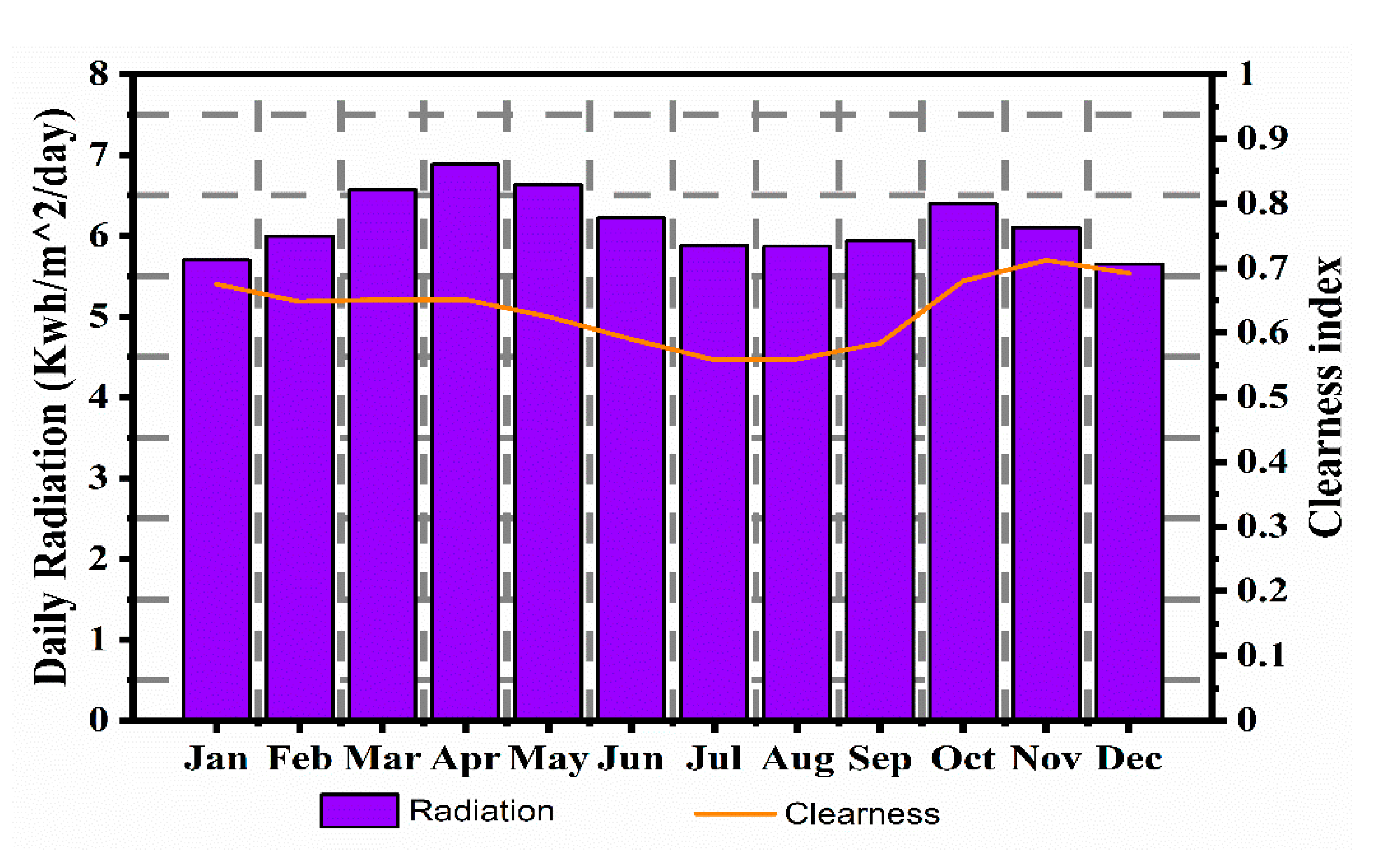
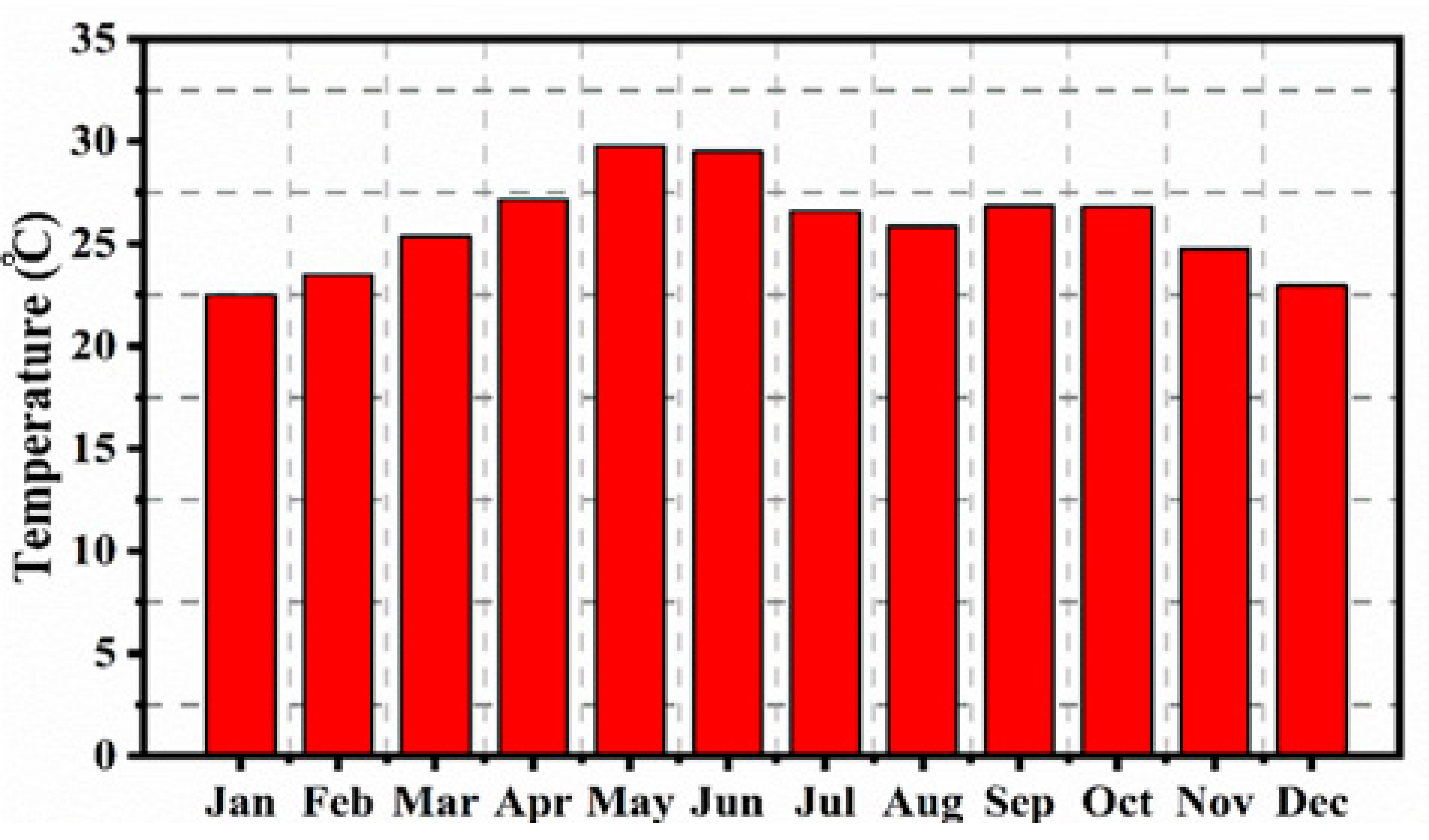
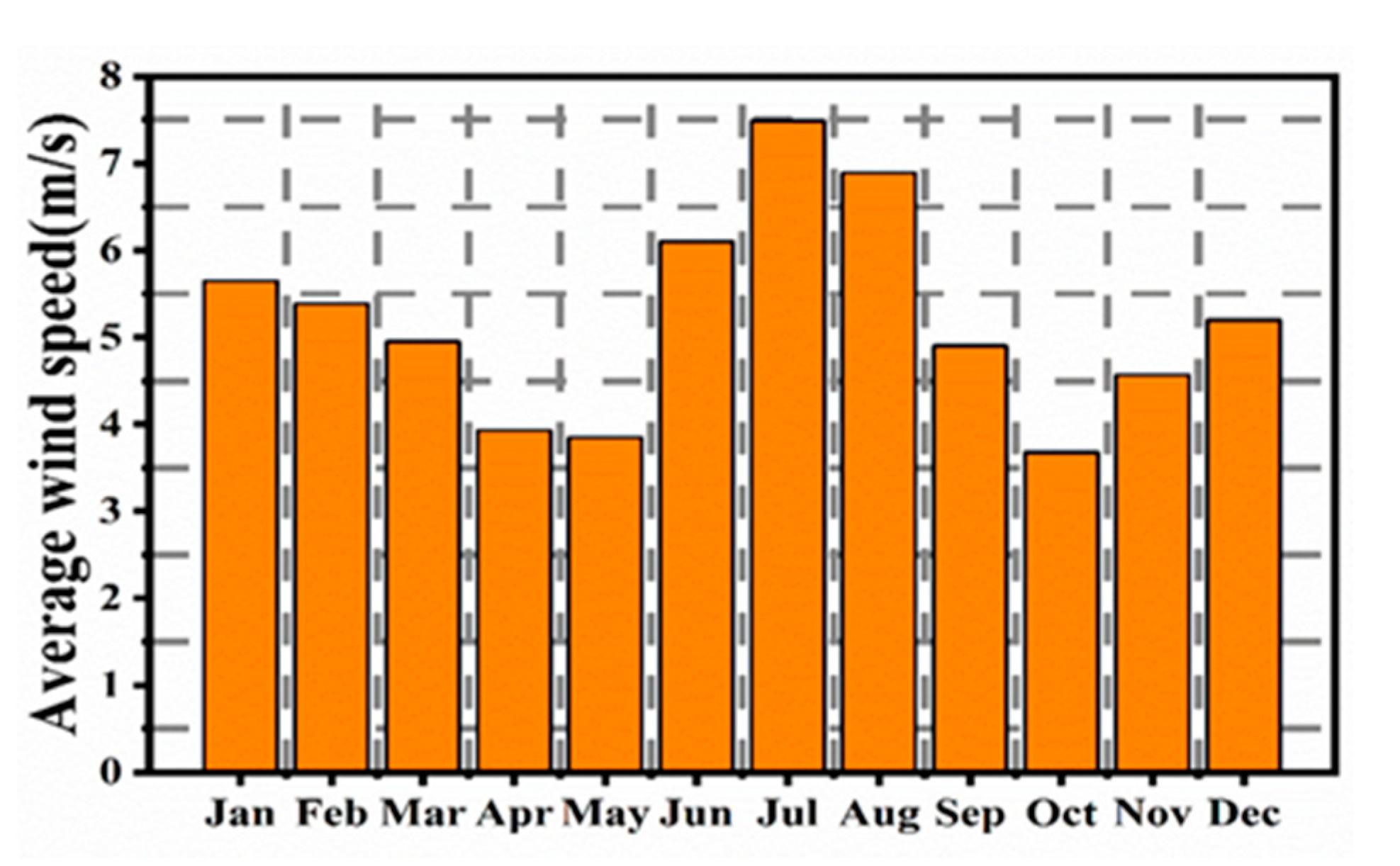




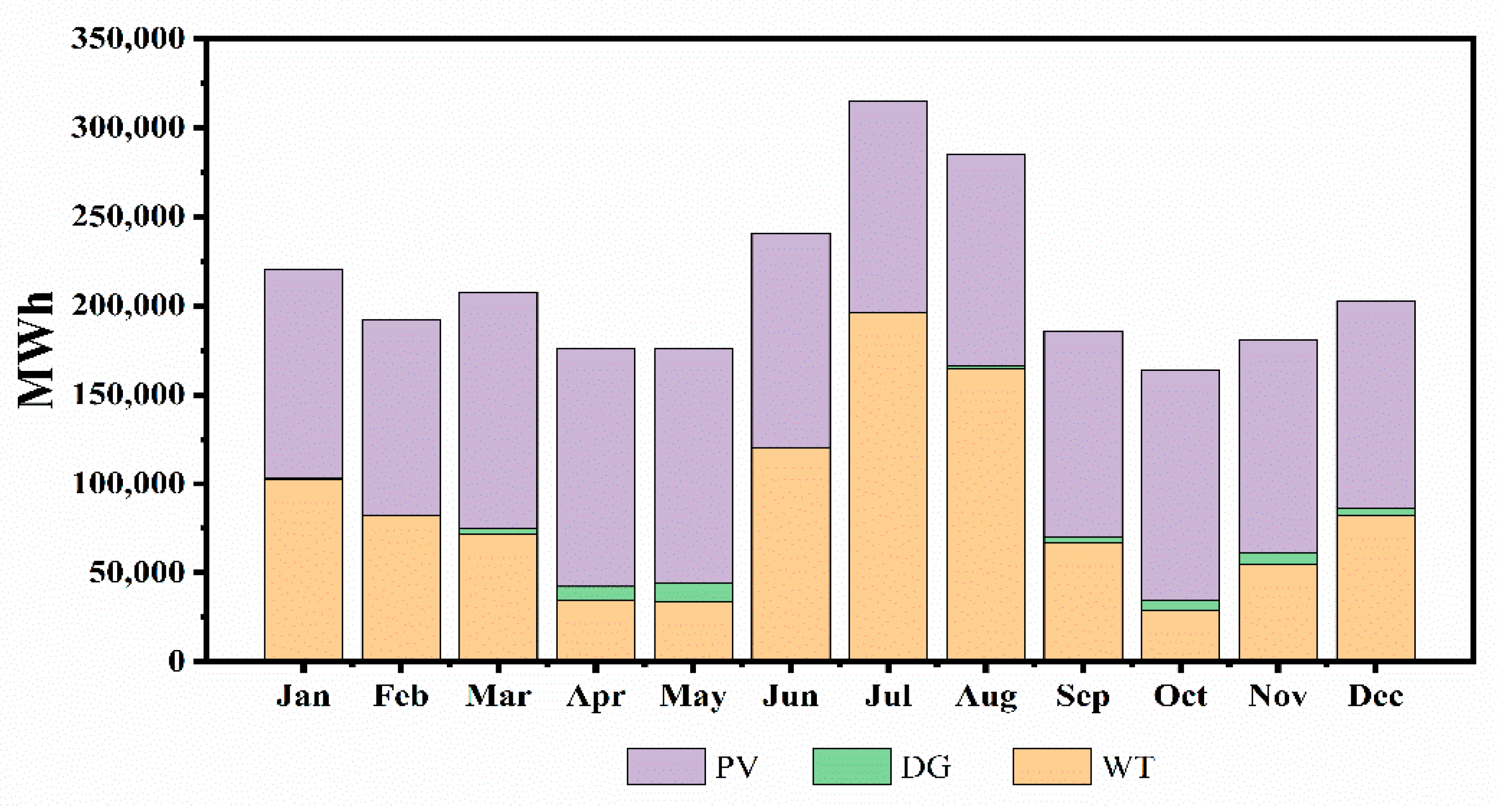
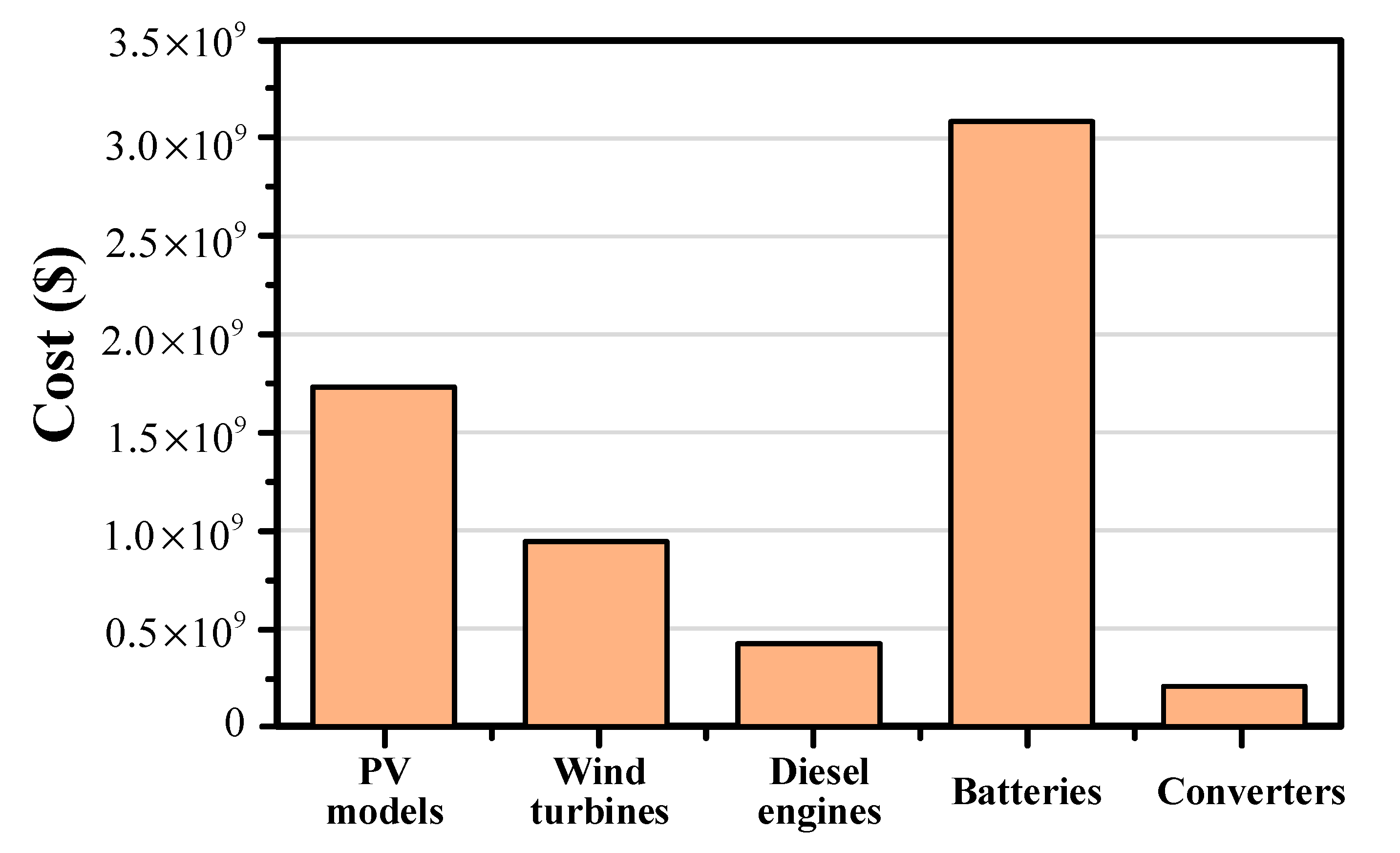
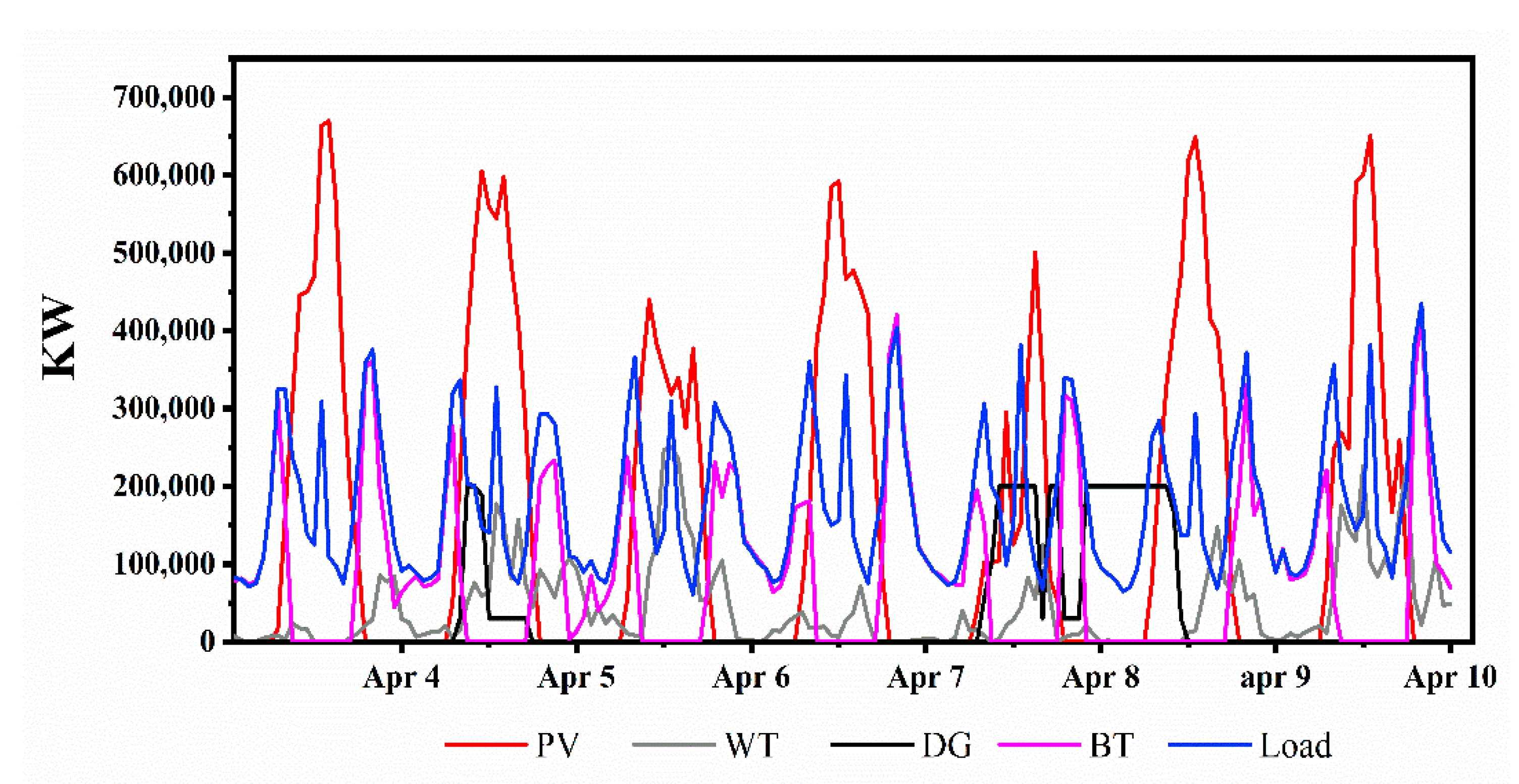
| Scenario | Microgrid Configuration | Initial Capital Cost (Dollar) | Replacement Cost (Dollar) | M&O Cost (Dollar) | Fuel Cost (Dollar) | Salvage (Dollar) | NPC (Dollar) |
|---|---|---|---|---|---|---|---|
| 1 | Case I | 64,687,500 | 116,075,258.7 | 10,620,009.25 | 16,232,062,868 | 32,148,174.67 | 16.4B |
| Case II | 4,448,705,259 | 2,997,981,232 | 393,621,176.7 | 533,241,401.7 | 737,092,955.5 | 7.64B | |
| Case III | 3,571,200,574 | 3,838,364,386 | 216,609,967.9 | 2,900,875,939 | 2,172,843,469 | 8.35B | |
| Case IV | 3,840,447,643 | 2,941,326,865 | 313,156,881 | 416,110,538.4 | 1,125,122,696 | 6.39B | |
| Case V | 4,889,114,330 | 3,165,627,330 | 364,630,791 | 0 | 1,013,651,131 | 7.41B | |
| 2 | Case I | 90,562,500 | 162,505,362.2 | 14,868,012.95 | 25,628,120,519 | 45,007,444.54 | 25.9B |
| Case II | 7,222,355,373 | 4,918,537,208 | 638,418,121.1 | 906,061,996.3 | 1,266,845,986 | 12.4B | |
| Case III | 4,308,573,392 | 4,090,663,952 | 121,118,222 | 7,831,385,862 | 2,736,624,628 | 13.6B | |
| Case IV | 6,335,955,720 | 4,657,547,441 | 482,255,816 | 681,189,244 | 1,809,457,172 | 10.3B | |
| Case V | 8,090,529,013 | 5,067,381,819 | 574,980,175.1 | 0 | 1,648,482,263 | 12.1B | |
| 3 | Case I | 103,500,000 | 185,720,413.9 | 16,992,014.8 | 29,076,240,403 | 51,437,079.47 | 29.3B |
| Case II | 8,258,468,654 | 5,544,745,051 | 720,155,913.4 | 875,139,025.5 | 1,474,947,063 | 13.9B | |
| Case III | 6,253,638,662 | 6,642,433,476 | 339,089,611.3 | 5,886,009,553 | 3,822,561,730 | 15.3B | |
| Case IV | 6,944,915,613 | 5,157,239,225 | 521,138,670.5 | 1,102,499,236 | 2,049,516,142 | 11.7B | |
| Case V | 9,535,600,179 | 5,161,567,632 | 595,997,324.2 | 0 | 1,722,210,397 | 13.6B |
| Parameters | DE (Case I) | PV + DE (Case II) | WT + DE (Case III) | PV + WT + DE (Case IV) | PV+WT (Case V) |
|---|---|---|---|---|---|
| Production (%) | DE (100%) | 97.5%PV + 2.5% DE | 91.8%WT + 8.2%DE | 57.5%PV + 40.8%WT + 1.71%DE | 79.9%PV + 20.1%WT |
| Fuel Consumption (L/yr) | 485,114,000 | 15,936,540 | 86,696,048 | 12,435,946 | 0 |
| CO2 emission (Kg/yr) | 1,283,022,594 | 42,148,726 | 229,292,444 | 32,890,411 | 0 |
| Reduction of fuel consumption&CO2 emission compared to Case I (%) | ------- | 96.72 | 82.13 | 97.44 | 100 |
| Renewable Fraction (%) | 0 | 96.1 | 78.60 | 97.1 | 100 |
| NPC (dollar) | 16.4B | 7.64B | 8.35B | 6.39B | 7.41B |
| COE (dollar/kwh) | 0.448 | 0.209 | 0.229 | 0.175 | 0.203 |
| Reduction of NPC&COE compared to case I (%) | ------- | 53.42 | 49.04 | 61.95 | 54.82 |
| Parameter | PV | WT | DE | Batteries | Converter |
|---|---|---|---|---|---|
| Rated size (kW) | 793,931 | 795,000 (265 turbines) | 200,000 | 4 Batteries in a single string, 255,135 strings = 1,020,540 Bat | 535,152 |
| Energy production (MWh/year) | 1,463,783.467 | 1,037,909.813 | 43,532.7291 | 575,390.9 | ----- |
| Year | 2020 | 2022 | 2024 | 2026 | 2028 | 2030 |
|---|---|---|---|---|---|---|
| Population (million) | 3.25 | 3.43 | 3.62 | 3.82 | 4.03 | 4.26 |
| Total Energy consumption (MWh/day) | 4130.8 | 4698.2 | 5267.7 | 5841.9 | 6423.5 | 7015.0 |
| NPC (billion dollars) | 6.39 | 7.33 | 8.17 | 9.03 | 9.94 | 10.86 |
| COE (dollars/kWh) | 0.175 | 0.176 | 0.175 | 0.175 | 0.175 | 0.175 |
| Real Interest Rate (%) | −5 | 0.24 | 5 |
|---|---|---|---|
| NPC (billion dollars) | 8.23 | 6.39 | 5.30 |
| COE (dollars/kWh) | 0.105 | 0.175 | 0.249 |
| Diesel Fuel Price (Dollar/L) | 0.69 | 1.38 | 2.07 |
|---|---|---|---|
| NPC (billion dollars) | 5.26 | 6.39 | 6.60 |
| COE (dollar/kWh) | 0.144 | 0.175 | 0.181 |
Publisher’s Note: MDPI stays neutral with regard to jurisdictional claims in published maps and institutional affiliations. |
© 2020 by the authors. Licensee MDPI, Basel, Switzerland. This article is an open access article distributed under the terms and conditions of the Creative Commons Attribution (CC BY) license (http://creativecommons.org/licenses/by/4.0/).
Share and Cite
Mubaarak, S.; Zhang, D.; Liu, J.; Chen, Y.; Wang, L.; Zaki, S.A.; Yuan, R.; Wu, J.; Zhang, Y.; Li, M. Potential Techno-Economic Feasibility of Hybrid Energy Systems for Electrifying Various Consumers in Yemen. Sustainability 2021, 13, 228. https://doi.org/10.3390/su13010228
Mubaarak S, Zhang D, Liu J, Chen Y, Wang L, Zaki SA, Yuan R, Wu J, Zhang Y, Li M. Potential Techno-Economic Feasibility of Hybrid Energy Systems for Electrifying Various Consumers in Yemen. Sustainability. 2021; 13(1):228. https://doi.org/10.3390/su13010228
Chicago/Turabian StyleMubaarak, Saif, Delong Zhang, Jinxin Liu, Yongcong Chen, Longze Wang, Sayed A. Zaki, Rongfang Yuan, Jing Wu, Yan Zhang, and Meicheng Li. 2021. "Potential Techno-Economic Feasibility of Hybrid Energy Systems for Electrifying Various Consumers in Yemen" Sustainability 13, no. 1: 228. https://doi.org/10.3390/su13010228
APA StyleMubaarak, S., Zhang, D., Liu, J., Chen, Y., Wang, L., Zaki, S. A., Yuan, R., Wu, J., Zhang, Y., & Li, M. (2021). Potential Techno-Economic Feasibility of Hybrid Energy Systems for Electrifying Various Consumers in Yemen. Sustainability, 13(1), 228. https://doi.org/10.3390/su13010228





